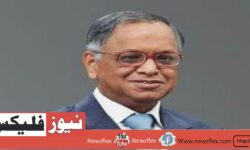
Nelson Mandela:
An All-Inclusive Biography of His Childhood and Education
On July 18, 1918, Nelson Rolihlahla Mandela was born in the little settlement of Mvezo in Umtata, which was then a part of the Cape Province of South Africa. He was baptised into the Thembu royal dynasty and given the name “Rolihlahla,” which translates to “pulling the branch of a tree” or, in simpler terms, “troublemaker.” Thembu royal family advisor and local chief Gadla Henry Mphakanyiswa was his father. Traditional African culture and traditions had an impact on Mandela’s early life.
Being the eldest in his family, Mandela attended school first, and it was there that a teacher gave him the English name “Nelson.” At the time, the University of Fort Hare was the sole residential centre for higher education available to Black South Africans, where he pursued his further education. Later, while pursuing his legal studies at the University of Witwatersrand, he got to know future anti-apartheid movement leaders and other activists.
Political Awakening and Activism Opposing Apartheid
After Mandela relocated to Johannesburg in 1941, he started to become more politically aware. In 1944, he became a founding member of the ANC Youth League after joining the African National Congress (ANC) in 1943. Mandela and his Youth League comrades pushed for a more radical strategy to advance civil rights to turn the ANC into a mass movement.
Mandela’s leadership and oratory abilities helped him become well-known inside the ANC. He was named national volunteer-in-chief of the Defiance Campaign in 1952. This campaign promoted nonviolent opposition against the laws of apartheid. The apartheid government banned him and made multiple arrests as a result of his activities.
Detention and Robben Island
Umkhonto we Sizwe (“Spear of the Nation”), the ANC’s military branch, was co-founded by Mandela in 1961 to sabotage the apartheid government. He was detained and given a five-year prison term in 1962 for encouraging strikes among employees and fleeing the nation illegally.
Mandela and some other leaders were accused of sabotage and plotting to topple the government in 1964 during the Rivonia Trial. Mandela stated he was willing to die in his well-known statement from the dock to uphold the principles of a free and democratic society. After receiving a life sentence, he was imprisoned for the next 27 years, mostly on Robben Island.
Release and Headship
The South African government was finally compelled to reevaluate its position on apartheid due to external pressure and escalating internal discontent. Nelson Mandela was released from jail on February 11, 1990. A new era in South African politics began with his liberation. Mandela, who is today regarded as a worldwide icon of resistance and peacemaking, devoted his life to negotiating the abolition of apartheid and the establishment of multiracial elections.
Mandela and former President F.W. de Klerk shared the 1993 Nobel Peace Prize in recognition of their efforts to end apartheid. Mandela was chosen as the nation’s first black president in 1994, the year that South Africa had its first democratic elections. During his presidency, he prioritised nation-building, rapprochement, and correcting the socioeconomic disparities brought forth by apartheid.
After the White House and Legacy
Mandela was president for just one term before leaving office in 1999. Through the Nelson Mandela Foundation, he carried on his advocacy for social justice, peace, and human rights after leaving office. In addition, he was instrumental in resolving disputes and advancing healthcare and education.
On December 5, 2013, at the age of 95, Mandela departed from this life. His memory lives on as a testament to the strength of forgiveness and healing as well as the fight against oppression. In addition to being a trailblazer in the struggle against apartheid, he is also recognised for having had a significant influence on international movements promoting justice and human rights. Millions of people throughout the world are still inspired by Nelson Mandela’s life and legacy.
نیلسن منڈیلا: ایک مکمل سوانح عمری
ابتدائی زندگی اور تعلیم
نیلسن رولیہلہ منڈیلا 18 جولائی 1918 کو امٹاٹا کے چھوٹے سے گاؤں میوزو میں پیدا ہوئے، جو اس وقت جنوبی افریقہ کے صوبہ کیپ کا حصہ تھا۔ اس کا تعلق تھیمبو کے شاہی خاندان سے تھا اور اسے ‘رولیہلہلہ’ کا نام دیا گیا تھا، جس کا مطلب ہے ‘درخت کی شاخ کھینچنا’ یا زیادہ بول چال میں ‘مصیبت پیدا کرنے والا’۔ اس کے والد، گڈلا ہنری ایمفاکانیئسوا، تھیمبو شاہی خاندان کے مقامی سربراہ اور مشیر تھے۔ منڈیلا کی ابتدائی زندگی روایتی افریقی ثقافت اور رسم و رواج سے متاثر تھی۔
منڈیلا اپنے خاندان میں اسکول جانے والے پہلے فرد تھے، جہاں ایک استاد نے انہیں انگریزی نام ‘نیلسن’ دیا۔ اس نے یونیورسٹی آف فورٹ ہیئر میں اعلیٰ تعلیم حاصل کی، جو اس وقت جنوبی افریقہ میں سیاہ فاموں کے لیے اعلیٰ تعلیم کا واحد رہائشی مرکز تھا۔ بعد میں اس نے وِٹ واٹرسرینڈ یونیورسٹی میں قانون کی تعلیم حاصل کی، جہاں اس نے ساتھی کارکنوں اور نسل پرستی کے خلاف تحریک کے مستقبل کے رہنماؤں سے ملاقات کی۔
سیاسی بیداری اور نسل پرستی کے خلاف سرگرمی
منڈیلا کی سیاسی بیداری کا آغاز اس وقت ہوا جب وہ 1941 میں جوہانسبرگ چلے گئے۔ انہوں نے 1943 میں افریقن نیشنل کانگریس (اے ان سی) میں شمولیت اختیار کی اور 1944 میں اے ان سی یوتھ لیگ کے بانی رکن بن گئے۔ منڈیلا اور ان کے ساتھیوں نے یوتھ لیگ میں تبدیلی کی کوشش کی۔ اے ان سی ایک عوامی تحریک میں، شہری حقوق کے حصول کے لیے زیادہ بنیاد پرست نقطہ نظر کی وکالت کرتی ہے۔
منڈیلا اپنی قائدانہ صلاحیتوں اور تقریری صلاحیتوں کے ذریعے اے این سی کے اندر نمایاں مقام حاصل کر گئے۔ 1952 میں، وہ غیر منصفانہ نسل پرستی کے قوانین کے خلاف دفاعی مہم کے قومی رضاکار ان چیف بن گئے، جس نے عدم تشدد کے خلاف مزاحمت کی وکالت کی۔ اس کی سرگرمی کی وجہ سے رنگ برنگی حکومت نے کئی گرفتاریاں اور پابندیاں لگائیں۔
قید اور روبن جزیرہ
1961 میں، منڈیلا نے اے ان سی کے مسلح ونگ، اومخہونتو وی سیزوی (‘قوم کا نیزہ’) کی مشترکہ بنیاد رکھی، جس کا مقصد تخریب کاری کے ذریعے نسل پرست حکومت کا تختہ الٹنا تھا۔ 1962 میں، انہیں غیر قانونی طور پر ملک چھوڑنے اور کارکنوں کو ہڑتال پر اکسانے کے جرم میں گرفتار کیا گیا اور پانچ سال قید کی سزا سنائی گئی۔
1964 میں، ریوونیا ٹرائل کے دوران، منڈیلا اور کئی دوسرے رہنماؤں پر تخریب کاری اور حکومت کا تختہ الٹنے کی سازش کے الزامات عائد کیے گئے۔ گودی سے اپنی مشہور تقریر میں، منڈیلا نے اعلان کیا کہ وہ ایک جمہوری اور آزاد معاشرے کے آئیڈیل کے لیے مرنے کے لیے تیار ہیں۔ اسے عمر قید کی سزا سنائی گئی اور اگلے 27 سال جیل کی سلاخوں کے پیچھے، بنیادی طور پر رابن جزیرے پر گزارے۔
رہائی اور صدارت
بین الاقوامی دباؤ اور بڑھتی ہوئی اندرونی بدامنی نے بالآخر جنوبی افریقہ کی حکومت کو رنگ برنگی پر اپنے موقف پر نظر ثانی کرنے پر مجبور کر دیا۔ 11 فروری 1990 کو منڈیلا کو جیل سے رہا کیا گیا۔ ان کی رہائی نے جنوبی افریقہ کی سیاست میں ایک نئے دور کا آغاز کیا۔ منڈیلا، جو اب مزاحمت اور مفاہمت کی عالمی علامت ہیں، نے رنگ برنگی کے خاتمے اور کثیرالنسلی انتخابات کے قیام کے لیے انتھک محنت کی۔
1993 میں، منڈیلا اور اس وقت کے صدر ایف ڈبلیو ڈی کلرک کو نسل پرستی کو ختم کرنے کی کوششوں کے لیے مشترکہ طور پر امن کا نوبل انعام دیا گیا۔ 1994 میں، جنوبی افریقہ میں اپنے پہلے جمہوری انتخابات ہوئے، اور منڈیلا ملک کے پہلے سیاہ فام صدر کے طور پر منتخب ہوئے۔ ان کی صدارت نے مفاہمت، قوم سازی اور نسل پرستی کی وجہ سے پیدا ہونے والے سماجی و اقتصادی عدم توازن کو دور کرنے پر توجہ مرکوز کی۔
بعد از صدارت اور میراث
منڈیلا نے ایک مدت تک صدر کے طور پر کام کیا، 1999 میں استعفیٰ دے دیا۔ سیاست سے ریٹائر ہونے کے بعد، انہوں نے نیلسن منڈیلا فاؤنڈیشن کے ذریعے امن، سماجی انصاف اور انسانی حقوق کی وکالت جاری رکھی۔ انہوں نے تنازعات میں ثالثی اور تعلیم اور صحت کی دیکھ بھال کے فروغ میں بھی کلیدی کردار ادا کیا۔
منڈیلا کا انتقال 5 دسمبر 2013 کو 95 سال کی عمر میں ہوا۔ ان کی میراث ظلم کے خلاف جدوجہد اور معافی اور مفاہمت کی طاقت کی علامت کے طور پر برقرار ہے۔ انہیں نہ صرف نسل پرستی کے خلاف جنگ میں ان کی قیادت کے لیے یاد کیا جاتا ہے بلکہ انصاف اور انسانی حقوق کے لیے عالمی تحریکوں پر ان کے گہرے اثرات کے لیے بھی یاد کیا جاتا ہے۔ نیلسن منڈیلا کی زندگی اور کام دنیا بھر میں لاکھوں لوگوں کو متاثر کرتا رہتا ہے۔








